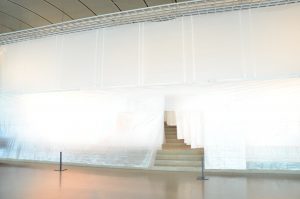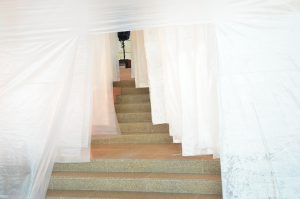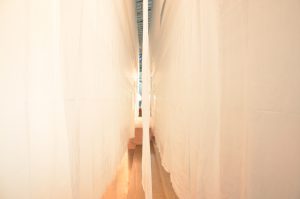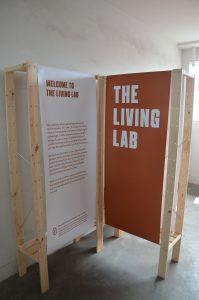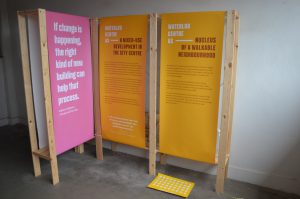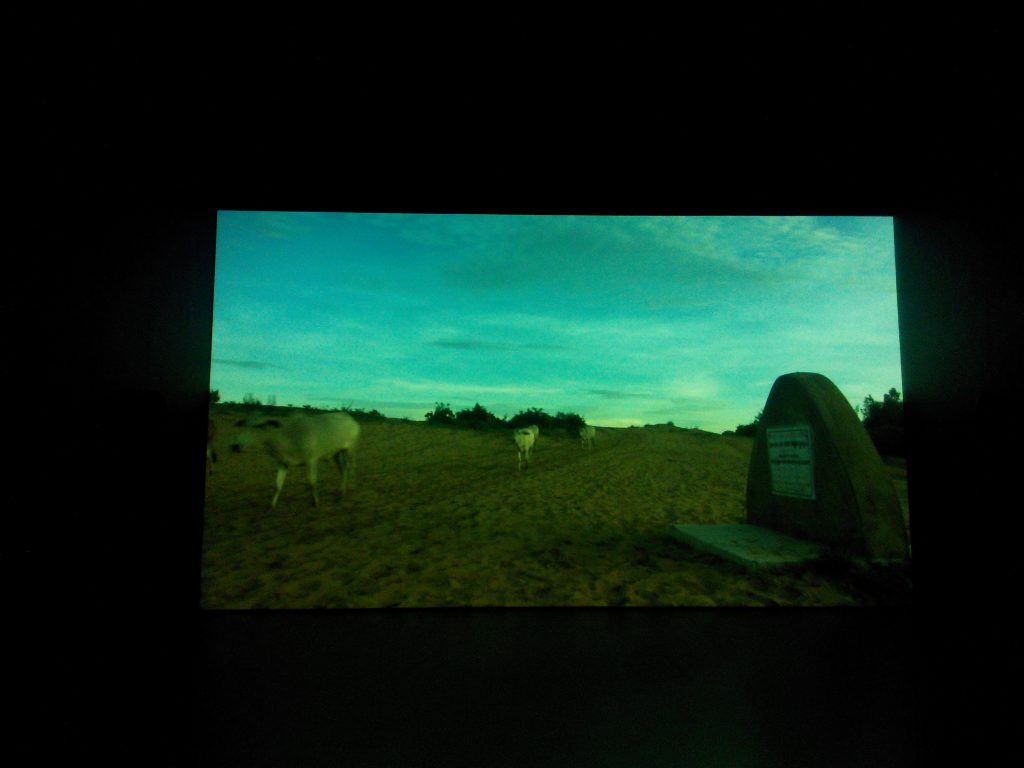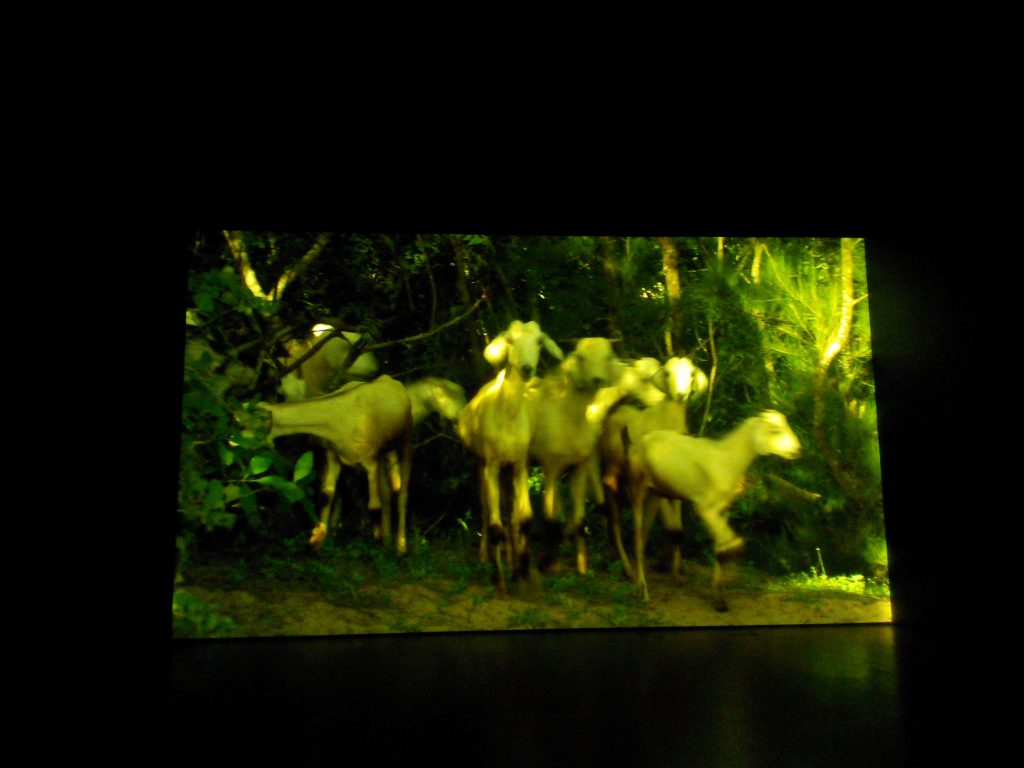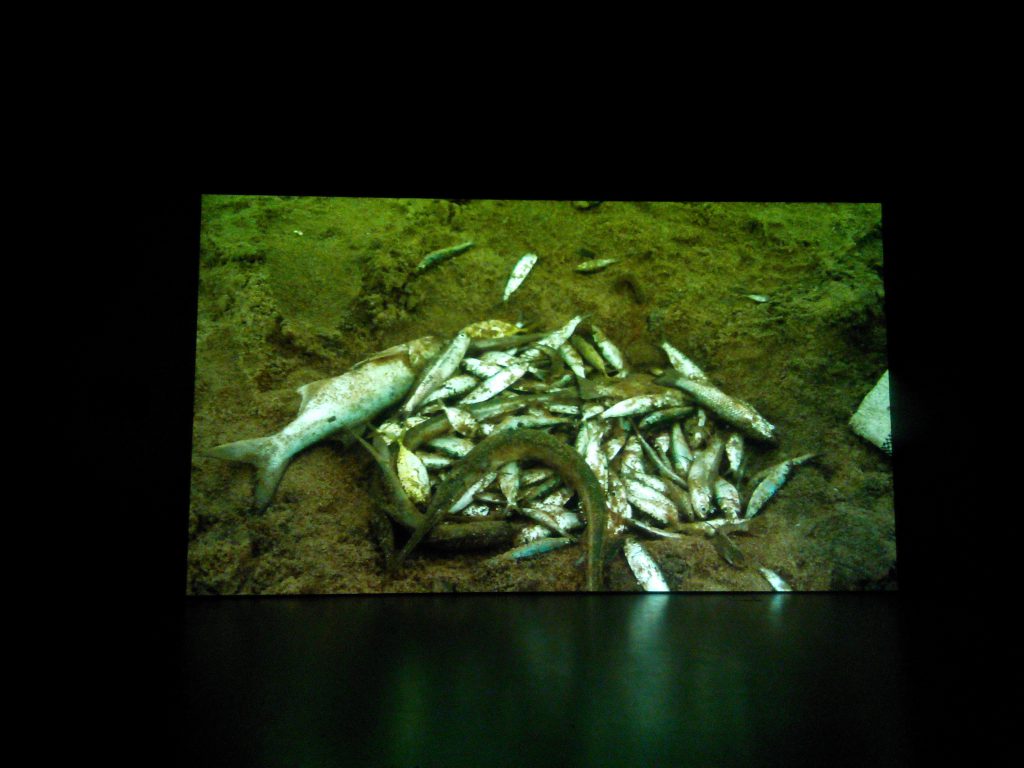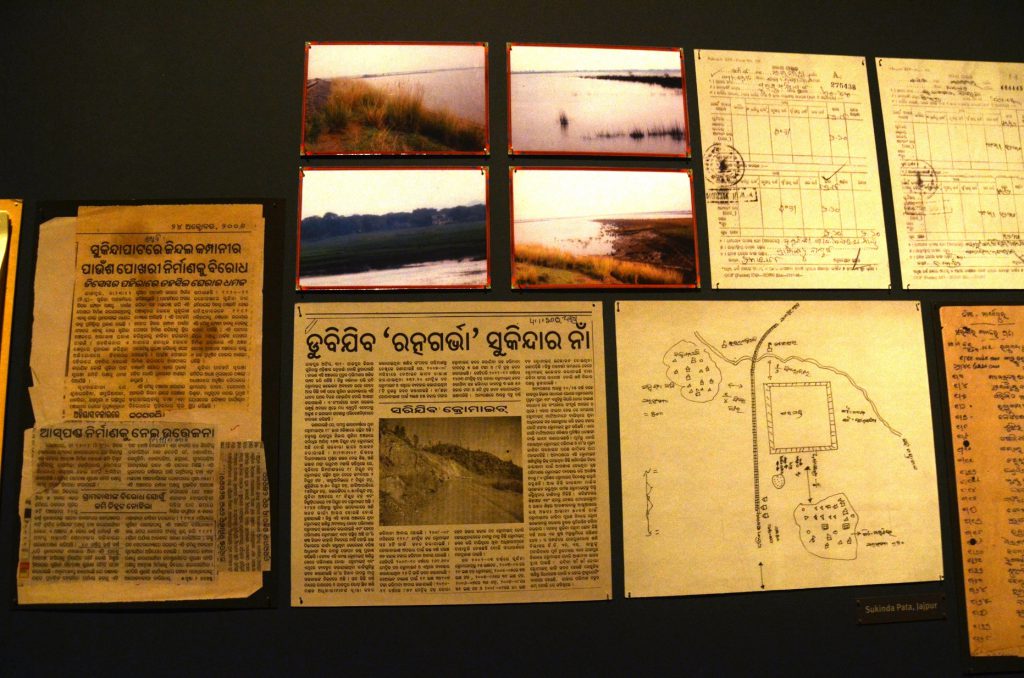No Room to Enter by Kathryn Kng
Description of the Work: Large white plastics sheets were used and hung downwards from the Esplanade Concourse’s ceiling. They looked like individual panels slicing through the space.
Preliminary Read:
Initially when I saw the work, I was quite amazed by the scale of it. It was like a huge white box hanging down from the ceiling. Upon walking closer, I noticed that they were actually plastic sheets hung down in a parallel manner. I was quite curious at the small path intentionally designed in between the sheets which then led to the top of the staircase. At first I thought that the artist wanted the viewer to walk through the path lined up but it was actually blocked. Looking around, I realised that there was another path at the extreme right of the staircase which will lead the viewer right to the top while giving them a chance to view the art work from front to back. Right then I was wondering, perhaps the artist wanted the viewers to notice a space, a common stairway, which we would normally take it for granted and would probably not spare a second thought about it.
Secondary Read:
After reading the work description, the artist’s intention was to make use of the work to allow people to think about their interaction with the inanimate spaces. Intrigued by the artist’s intentions, I stood there for a while and began to notice how people interact with the work. While quite a few did not give a second look about it, a number of them, especially the older generation look rather confused. They were finding ways to get past the piece of work and it was not until they read the description that they look like they get what the work was about. Being situated in an air conditioned place, the plastic sheets exhibit a sense of stillness even though it was rather thin and seem prone to wind movements. The sense of stillness communicates the intention for the viewer to make a detour around the work rather well.
The Living Lab by FELLOW
Description of the Work: There were individual questions posted at different small areas of the space used. Materials such as ping pong balls, coloured stickers, raffia strings were provided for the viewers to answer those questions.
Preliminary Read
When I first saw The Living Lab, I was very amused by the layout of the investigative project. Almost every corner of the space used contained some interactive element which made it very attractive to the viewer. As opposed to just viewing and no touching of art works, this was a refreshing side of the exhibition at the NOISE-Waterloo. Initially, I feel like it is just a normal survey for the public but after reading through each question in detail, I realised that the layout and material provided for the viewer to answer those questions create variation which triggers the viewers’ desire to participate actively in it. Besides, in this totally anonymous survey, I feel that it allows people to be more honest with their answers as well.
Secondary Read:
After reading the project’s description, I feel that they are examining human behaviour and the environment rather closely. The investigative project serves as a timely reminder for the symbiotic relationship between the city and the dwellers. I began to appreciate the mixed-used buildings like Waterloo centre more as well.
